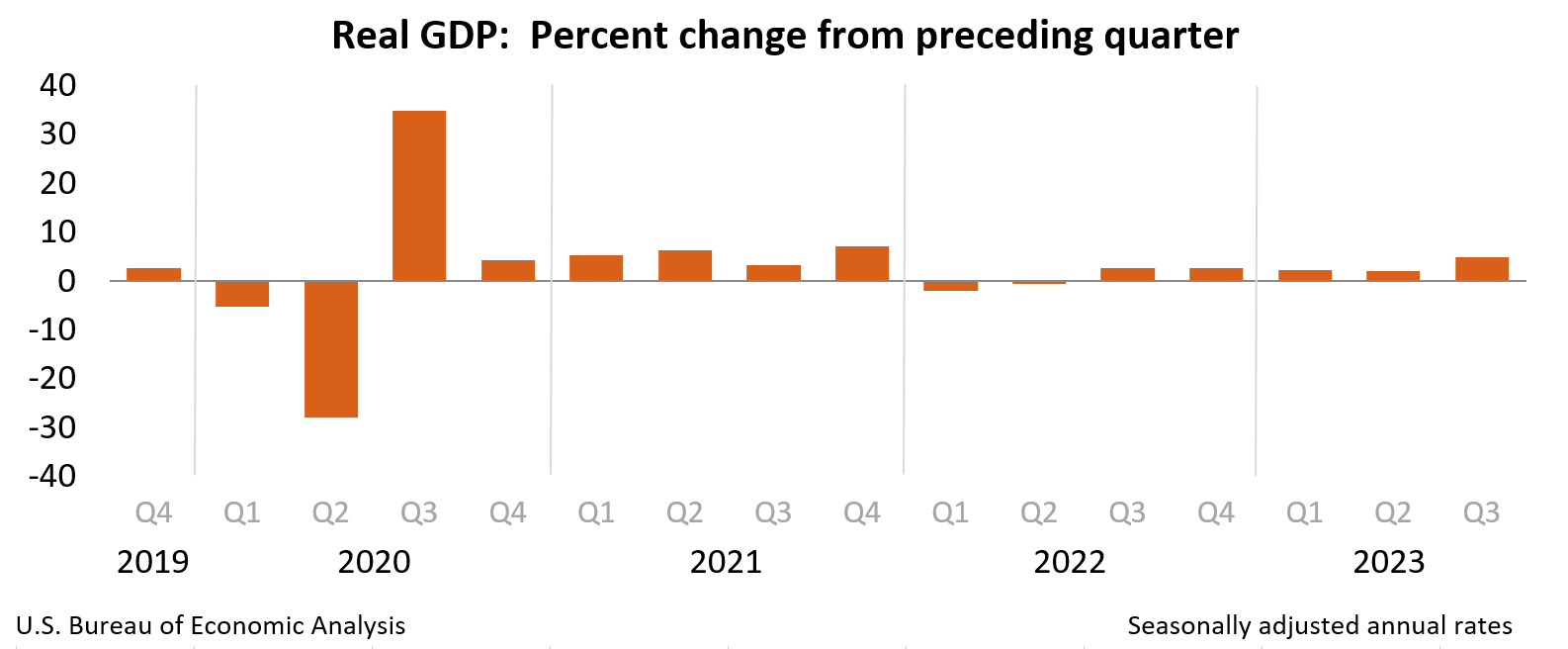Real U.S. Gross Domestic Product (GDP) increased faster in the third quarter, but price increases accelerated and Americans’ real disposable personal income (DPI) and savings rate fell, the Bureau of Economic Analysis (BEA) reported Thursday in its initial (“advance”) estimate.
Adjusted for inflation, “Real” GDP increased at a 4.9% annual rate in the third quarter, after rising 2.1% in the second quarter. In current dollars, GDP rose 8.5% ($560.5 billion) in the third quarter to a level of $27.62 trillion, up from the previous quarter’s 3.8% ($249.4 billion) gain.
Spending largely drove the faster increase, the BEA reports:
“Compared to the second quarter, the acceleration in real GDP in the third quarter reflected accelerations in consumer spending, private inventory investment, and federal government spending and upturns in exports and residential fixed investment. These movements were partly offset by a downturn in nonresidential fixed investment and a deceleration in state and local government spending. Imports turned up.”
The increase in consumer spending reflected increases in both services and goods.
Within services, the leading contributors to the spending increase were:
- housing and utilities,
- health care,
- financial services and insurance, and
- food services and accommodations.
The increase in housing and utilities was led by spending on electricity.
Within goods, the increase was fueled by other nondurable goods, recreational goods and vehicles.
Prices increased at a faster rate in the third quarter, than they did in the second:
- The increase in the price index for gross domestic purchases was 3.0%, up from 1.4%.
- The increase in the personal consumption expenditures (PCE) price index was 2.9%, up from 2.5%.
- Excluding food and energy, so-called “core” gross domestic purchases prices increased by 2.7%, after rising 2.1% the previous quarter.
Meanwhile, Disposable personal income (DPI) increased only 1.9%, just a third of its 6.1% second-quarter growth.
Since prices rose faster than income, real disposable personal income actually decreased 1.0% in the third quarter, after rising 3.5% in the second quarter.
The personal saving rate - personal saving as a percentage of disposable personal income - fell from 5.2% to 3.8%.
The full text of BEA’s release can be found at www.bea.gov/news/2023/gross-domestic-product-third-quarter-2023-advance-estimate.
The business and economic reporting of CNSNews.com is funded in part with a gift made in memory of Dr. Keith C. Wold.

